- Home
- Peter F. Hamilton
Pandora's Star
Pandora's Star Read online
Pandora’s Star
Peter F. Hamilton was born in Rutland in 1960, and still lives near Rutland Water. He began writing in 1987 and sold his first short story to Fear magazine in 1988. He has also been published in Interzone and the In Dreams and New Worlds anthologies, and in several small-press publications.
His novels include the Greg Mandel series: Mindstar Rising, A Quantum Murder and The Nano Flower; and the bestselling Night’s Dawn trilogy: The Reality Dysfunction, The Neutronium Alchemist and The Naked God. Also published by Pan (and Macmillan) are A Second Chance at Eden, a novella and six short stories set in the same brilliantly realized universe, and The Confederation Handbook, a vital guide to the Night’s Dawn trilogy. His recent novels are Fallen Dragon, Misspent Youth, Pandora’s Star, Judas Unchained and The Dreaming Void. His latest novel The Temporal Void, was published by Macmillian October 2008
Also by Peter F. Hamilton
The Greg Mandel series
Mindstar Rising
A Quantum Murder
The Nano Flower
The Night’s Dawn trilogy
The Reality Dysfunction
The Neutronium Alchemist
The Naked God
In the same Timeline
A Second Chance at Eden
The Confederation Handbook
(a vital guide to the Night’s Dawn trilogy)
Fallen Dragon
Misspent Youth
The Commonwealth Saga
Judas Unchained
The Void trilogy
The Dreaming Void
The Temporal Void
Peter F. Hamilton
PANDORA’S STAR
PART ONE OF THE COMMONWEALTH SAGA
PAN BOOKS
First published 2004 by Macmillan
First published in paperback 2004 by Pan Books
This electronic edition published 2009 by Pan Books
an imprint of Pan Macmillan Ltd
Pan Macmillan, 20 New Wharf Rd, London N1 9RR
Basingstoke and Oxford
Associated companies throughout the world
www.panmacmillan.com
ISBN 978-0-330-46650-9 in Adobe Reader format
ISBN 978-0-330-46649-3 in Adobe Digital Editions format
ISBN 978-0-330-46651-6 in Mobipocket format
Copyright © Peter F. Hamilton 2004
The right of Peter F. Hamilton to be identified as the author of this work has been asserted by him in accordance with the Copyright, Designs and Patents Act 1988.
You may not copy, store, distribute, transmit, reproduce or otherwise make available this publication (or any part of it) in any form, or by any means (electronic, digital, optical, mechanical, photocopying, recording or otherwise), without the prior written permission of the publisher. Any person who does any unauthorized act in relation to this publication may be liable to criminal prosecution and civil claims for damages.
A CIP catalogue record for this book is available from the British Library.
Visit www.panmacmillan.com to read more about all our books and to buy them. You will also find features, author interviews and news of any author events, and you can sign up for e-newsletters so that you’re always first to hear about our new releases.
Contents
Prologue
Chapter 1
Chapter 2
Chapter 3
Chapter 4
Chapter 5
Chapter 6
Chapter 7
Chapter 8
Chapter 9
Chapter 10
Chapter 11
Chapter 12
Chapter 13
Chapter 14
Chapter 15
Chapter 16
Chapter 17
Chapter 18
Chapter 19
Chapter 20
Chapter 21
Chapter 22
Chapter 23
Chapter 24
Chapter 25
Main Characters
Daniel Alster Chief executive aide to Nigel Sheldon.
Alessandra Baron News-show presenter.
Dudley Bose Astronomer at Gralmond University.
Gore Burnelli Head of the Burnelli Grand Family.
Justine Burnelli Earth socialite.
Thompson Burnelli Commonwealth senator.
Sara Bush Matriarch of the Ice Citadel.
Rafael Columbia Chief of the Intersolar Serious Crimes Directorate.
Elaine Doi Commonwealth Vice President, later President.
Jean Douvoir Pilot, Second Chance.
Adam Elvin Ex-radical, quartermaster for Guardians of Selfhood.
Hoshe Finn Detective, Darklake city police.
McClain Gilbert CST First Contact team leader.
The High Angel A sentient alien starship.
Anna Hober Sensor officer, Second Chance.
Alic Hogan Lieutenant Commander, Navy Intelligence.
Ozzie Fernandez Isaacs Co-inventor of wormhole technology. Co-owner of CST.
Bradley Johansson Founder of Guardians of Selfhood.
Renne Kampasa Investigator, Intersolar Serious Crimes Directorate.
Patricia Kantil Chief aide to Elaine Doi.
Captain Wilson Kime Ex-NASA pilot. Board member of Farndale Engineering.
Tu Lee Hyperspace officer, Second Chance.
Bruce McFoster A clan member in the Guardians of Selfhood.
Kazimir McFoster A clan member in the Guardians of Selfhood.
Stig McSobel A clan member in the Guardians of Selfhood.
Oscar Monroe Operations Director, CST exploratory division wormhole on Merredin.
Morton Chairman of Gansu Construction.
Paula Myo Chief Investigator, Intersolar Serious Crimes Directorate.
Orion Parentless teenage boy from Silvergalde.
Carys Panther Mark’s aunt.
Qatux A Raiel, living on the High Angel.
Ramon D Senator for Buta, leader of African caucus.
Simon Rand Founder of Randtown on Elan.
Mellanie Rescorai Morton’s lover.
Russell Sall Science officer, Second Chance.
Bruno Seymore Science officer, Second Chance.
Tara Jennifer Shaheef Morton’s ex-wife.
Nigel Sheldon Co-inventor of wormhole technology. Co-owner of Compression Space Transport.
Tunde Sutton Science officer, Second Chance.
Tarlo Investigator, Intersolar Serious Crimes Directorate.
Tochee Alien of unknown origin.
Liz Vernon Biogenetic technician, Mark’s wife.
Mark Vernon Engineer.
Prologue
Mars completely dominated space outside the Ulysses, the bloated dirty-ginger crescent of a planet that never quite made it as a world. Small, frigid, barren, airless, it was simply the solar system’s colder version of hell. Yet its glowing presence in the sky had dominated most of human history; first as a god to inspire generations of warriors, then a goal to countless dreamers.
Now, for NASA Captain-Pilot Wilson Kime, it had become solid land. Two hundred kilometres beyond the landing craft’s narrow, curving windshield he could pick out the dark gash that was the Valles Marineris. As a boy he’d accessed the technofantasies of the Aries Underground group, entranced by how one day in an unspecified future, foaming water would once again race down that vast gully as raw human ingenuity unlocked the frozen ice trapped beneath the rusting landscape. Today, he would actually get to walk through those dusty craters he’d studied in a thousand satellite photos, hold the legendary thin red sand in his gloved hands to watch little trickles slip slowly through his fingers in the low gravity. Today was the most glorious history in the making.
Wilson automatically started a deep feedback br
eathing exercise, calming his heart before the reality of what was about to happen affected his metabolism. No way was he giving those goddamned desk medics back in Houston a chance to question his fitness to pilot the landing craft. Eight years he’d spent in the USAF, including two combat duties based in Japan for Operation Deliver Peace, followed by another nine years with NASA. All that build-up and anticipation; the sacrifices, his first wife and totally alienated kid; the eternal VR training at Houston, the press conferences, the mind-rotting PR tours of factories; he’d endured it all because it led to this one moment in this most sacred place.
Mars. At last!
‘Initiating VKT ranging, cross-match RL acquisition data,’ he told the landing craft’s autopilot. The coloured strands of light captured inside the windshield began to change their geometrical patterns. He kept one eye on the timer: eight minutes. ‘Purging BGA system and vehicle interlink tunnel.’ His left hand flicked the switches on the console. Watching the tiny LEDs come on to confirm the switch cycle. Some actions NASA would never entrust to voice-activation soft-ware. ‘Commencing BGA non-propulsive vent. Awaiting prime ship sep sequence confirmation.’
‘Roger that, Eagle II,’ Nancy Kressmire’s voice said in his headset. ‘Telemetry analysis has you as fully functional. Prime ship power systems ready for disengagement.’
‘Acknowledged,’ he told the Ulysses captain. Turquoise and emerald spider webs within the windshield fluttered elegantly, reporting the lander’s internal power status. Their sharp primary colours appeared somehow alien across the dull pallor of the wintry Martian landscape outside. ‘Switching to full internal power cells. I have seven greens for umbilical sep. Retracting inter-vehicle access tunnel.’
Alarmingly loud metallic clunks rang through the little cabin as the spaceplane’s airlock tunnel sank back into the fuselage. Even Wilson flinched at the intrusive sounds, and he knew the spaceplane’s mechanical layout better than its designers.
‘Sir?’ he asked. According to the NASA manual, once the lander’s airlock had retracted from the prime ship they were technically a fully independent vehicle, and Wilson wasn’t the ranking officer.
‘The Eagle II is yours, Captain,’ Commander Dylan Lewis said. ‘Take us down when you’re ready.’
Very conscious of the camera at the back of the cabin, Wilson said: ‘Thank you, sir. We are on line for completed undocking in seven minutes.’ He could sense the buzz in the five passengers riding behind him. All of them were the straightest of straight arrows; they had so much right stuff between them it could be bottled. Yet now the actual moment was here they were no more controlled than a bunch of schoolkids heading for their first beach party.
The autopilot ran through the remaining pre-flight prep sequence, with Wilson ordering and controlling the list; adhering faithfully to the man-in-the-loop tradition that dated all the way back to the Mercury Seven and their epic struggle for astronauts to be more than just spam in a can. Right on the seven-minute mark, the locking pins withdrew. He fired the RCS thrusters, pushing Eagle II gently away from the Ulysses. This time there was nothing he could do to stop his heart racing.
As they drew away, Ulysses became fully visible through the windshield. Wilson grinned happily at the sight of it. The inter-planetary craft was the first of its kind; actually quite an ungainly collection of cylindrical modules, tanks, and girders arranged in a circular grid shape two hundred metres across. Its perimeter sprouted long jet-black solar power panels like plastic petals, all of them tracking the sun. Several of the crew habitation sections were covered in big Stars and Stripes flags, implausibly gaudy against the plain silver-white thermal foam that coated every centimetre of the superstructure. Right in the centre of the vehicle, surrounded by a wide corrugated fan of silver thermal radiator panels, was the hexagonal chamber which housed the fusion generator that had made the ten-week flight time possible, constantly supplying power to the plasma rockets. It was the smallest fusion system ever built: a genuine made-in-America, cutting-edge chunk of technology. Europe was still building its first pair of commercial fusion reactors on the ground, while the USA had already commissioned five such units, with another fifteen being built. And the Europeans certainly hadn’t got anything equivalent to the sophisticated Ulysses generator.
Damn it, we can still get some things right, Wilson thought proudly as the shining conglomeration of space hardware retreated away into the eternal night. It would be another decade until the FESA could mount a Mars mission, by which time NASA planned on having a self-sustaining base on the icy sands of Arabia Terra. Hopefully, by then, the agency would also be flying asteroid-capture missions and even a Jovian expedition as well. I’m not too old to be a part of those, they’ll need experienced commanders.
His mind underwent just the tiniest tweak of envy at the prospect of what would come in the mid-term future, events and miracles whose timetable and budget allocations meant they might just elude him. The Europeans can afford to wait, though. While thanks to the dominant influence of the Religious Right over the last few administrations, the US had halted all genetic work centred around stem cells, the Federal government in Brussels had poured money into biogenic research, with spectacular results. Now that the early bugs had been ironed out of the hugely expensive procedure, they’d begun to rejuvenate people. The first man to receive the treatment, Jeff Baker, had died in a climax of global publicity; but in the following seven years there had been eighteen successes.
Space and Life. Those separate interests spoke volumes about the way the cultures of Earth’s two major Western power groups had diverged over the past three decades.
Now Wilson’s fellow Americans were beginning to re-evaluate their attitude to genetic engineering. Already there were urban myths of Caribbean and Asian clinics offering the rejuvenation service to multi-billionaires. While Federal Europe was once again attempting to narrow the American lead in space, desperate to prove to the world that it excelled in every field. Given the fractious political state currently afflicting the planet, Wilson rather welcomed the idea of the two blocs drawing closer together once more – that was, after Americans had landed on Mars.
‘First de-orbit burn in three minutes,’ the Eagle II autopilot said.
‘Standing by,’ Wilson told it. He automatically checked the fuel tank pressures, and followed that up with main engine ignition procedures.
Three hypergolic fuel rockets at the back of the little spaceplane fired for a hundred seconds, pushing their orbit into an atmosphere-intercept trajectory. The subsequent aero-brake manoeuvre lasted for over ninety minutes, with the scant Martian atmosphere pushing against the craft’s swept delta wings, killing its velocity. For the final fifteen minutes, Wilson could see the faintest of pink glows coming from the Eagle II’s blunt nose. It was the only evidence of the violence being done to the fuselage by high-velocity gas molecule impacts. The ride was incredibly smooth, with gravity slowly building as they sank towards the crater-rumpled landscape of Arabia Terra.
At six kilometres altitude, Wilson activated their profile dynamic wings. They began to expand, spreading out wide to generate as much lift as possible from the thin, frigid air. At full stretch they measured a hundred metres from tip to tip, enough to allow Eagle II to glide if necessary. Then their turbine fired up, gently thrusting them forward, keeping speed constant at two hundred and fifty kilometres an hour. The westernmost edge of the massive Schiaparelli crater slid into sight away in the distance, rolling walls rising up out of the rumpled ground like a weatherworn mountain range.
‘Visual acquisition of landing site,’ Wilson reported. His systems schematics were tracing green and blue sine waves across the view. Ground radar began to overlay a three-dimensional grid of spikes and gullies which almost matched what he could see.
‘Eagle II, mid-point systems review confirms you are go for landing,’ said Mission Control. ‘Good luck, guys. You’ve got quite an audience back here.’
‘Thank you, Mission Control
,’ Commander Lewis said formally. ‘We are eager for the touchdown. Hoping Wilson can give us a smooth one.’ It would be another four minutes before anyone back on Earth heard his words. By then they should be down.
‘Contact with cargo landers beacon,’ Wilson reported. ‘Range thirty-eight kilometres.’ He squinted through the windshield as the autopilot printed up a red line-of-sight bracket within the glass. The crater rim grew steadily larger. ‘Ah, I’ve got them.’ Two dusty grey specks sitting on a broad patch of flat landscape.
For the last stage, Eagle II flew a slow circle round the pair of robot cargo landers. They were simple squat cones which the Ulysses had sent down two days earlier, loaded with tonnes of equipment, including a small prefab ground base. Getting them unloaded and the projected exploration campus up and running was the principal task awaiting the crew of the Eagle II.
‘Groundscan confirms area one viability,’ Wilson said. He was almost disappointed at the radar picture. When Neil Armstrong and Buzz Aldrin were landing on the Moon, they had to hurriedly take manual control of their Lunar Module and fly it to safety when the designated landing site turned out to be strewn with boulders. This time, eighty-one years later, satellite imagery and orbital radar mapping had eliminated such uncertainty from the flight profile.
He brought the Eagle II round on its pre-plotted approach path, engaging the autopilot. ‘Landing gear extended and locked. VM engines pressurized and ready. Profile dynamic wings in reshape mode. Ground speed approaching one hundred kilometres per hour. Descent rate nominal. We’re on the wire, people.’

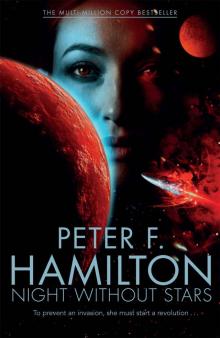 A Night Without Stars
A Night Without Stars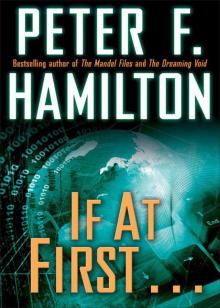 If at First . . .
If at First . . .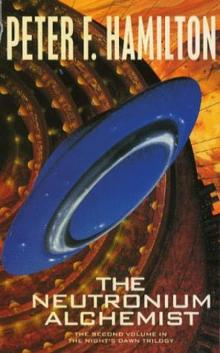 The Neutronium Alchemist
The Neutronium Alchemist Great North Road
Great North Road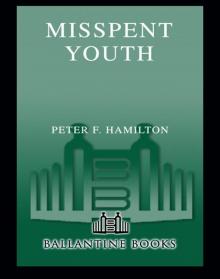 Misspent Youth
Misspent Youth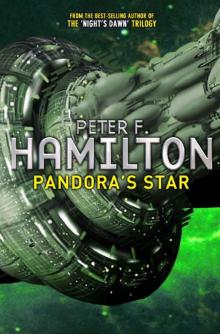 Pandora's Star
Pandora's Star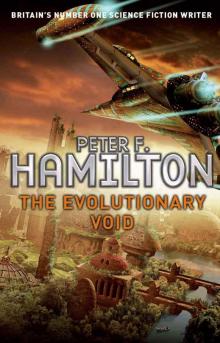 The Evolutionary Void
The Evolutionary Void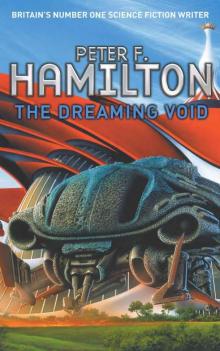 The Dreaming Void
The Dreaming Void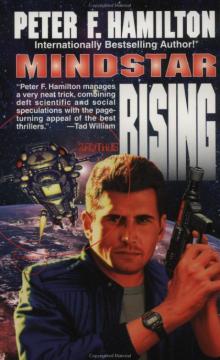 Mindstar Rising
Mindstar Rising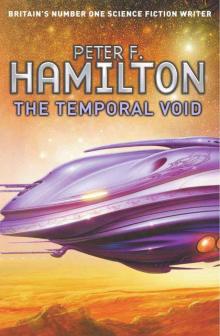 The Temporal Void
The Temporal Void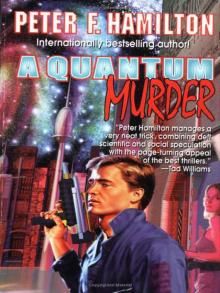 A Quantum Murder
A Quantum Murder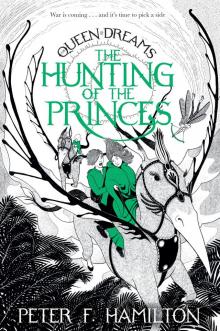 The Hunting of the Princes
The Hunting of the Princes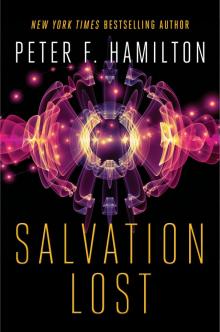 Salvation Lost
Salvation Lost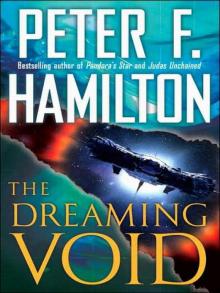 The Dreaming
The Dreaming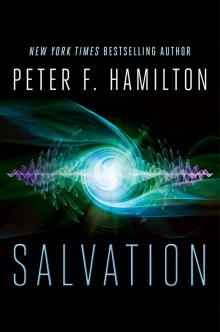 Salvation
Salvation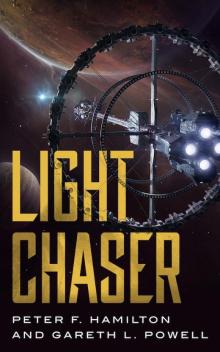 Light Chaser
Light Chaser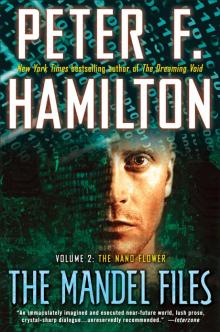 The Mandel Files, Volume 2: The Nano Flower
The Mandel Files, Volume 2: The Nano Flower![The Saints of Salvation [British Ed.] Read online](http://i1.bookreadfree.com/22/the_saints_of_salvation_british_ed__preview.jpg) The Saints of Salvation [British Ed.]
The Saints of Salvation [British Ed.]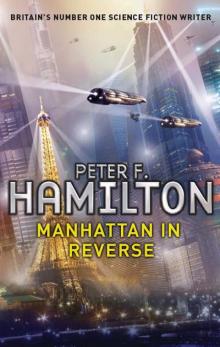 Manhattan in Reverse
Manhattan in Reverse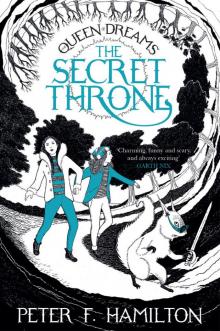 The Secret Throne
The Secret Throne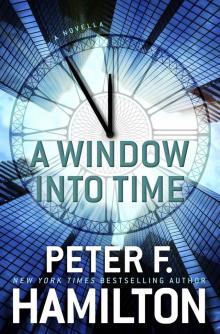 A Window Into Time
A Window Into Time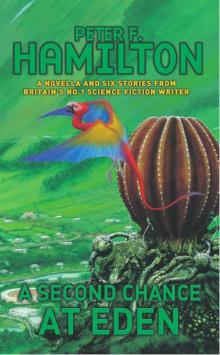 A Second Chance at Eden
A Second Chance at Eden The Nano Flower
The Nano Flower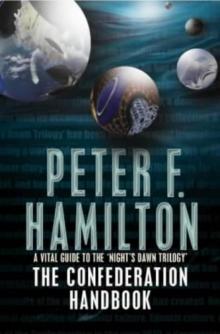 The Confederation Handbook
The Confederation Handbook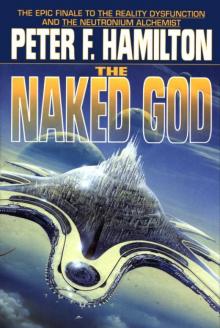 The Naked God
The Naked God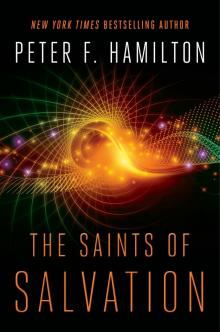 The Saints of Salvation
The Saints of Salvation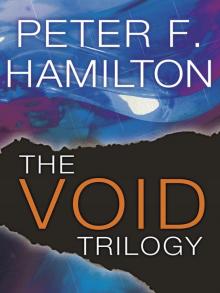 The Void Trilogy 3-Book Bundle
The Void Trilogy 3-Book Bundle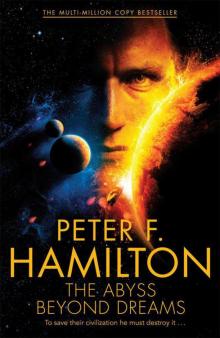 The Abyss Beyond Dreams
The Abyss Beyond Dreams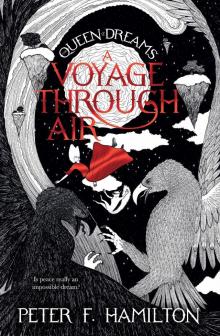 A Voyage Through Air
A Voyage Through Air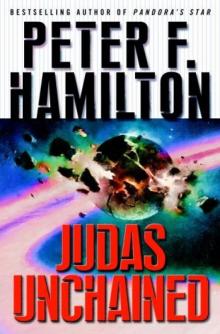 Judas Unchained
Judas Unchained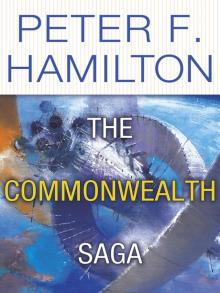 The Commonwealth Saga 2-Book Bundle
The Commonwealth Saga 2-Book Bundle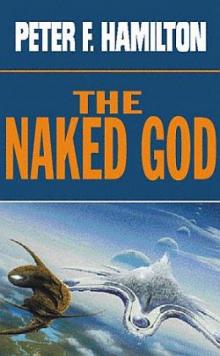 The Naked God - Flight nd-5
The Naked God - Flight nd-5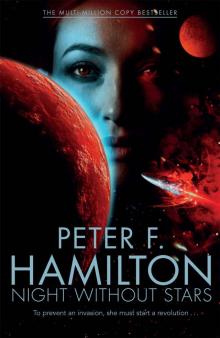 Night Without Stars (Chronicle of the Fallers Book 2)
Night Without Stars (Chronicle of the Fallers Book 2)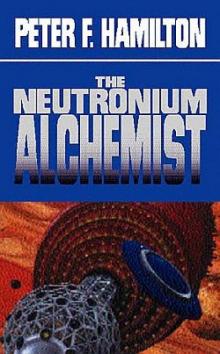 Neutronium Alchemist - Conflict nd-4
Neutronium Alchemist - Conflict nd-4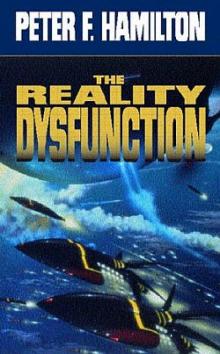 Reality Dysfunction - Expansion nd-2
Reality Dysfunction - Expansion nd-2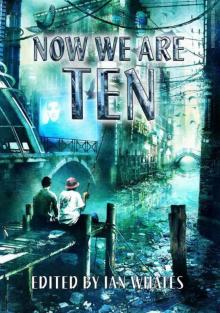 Now We Are Ten: Celebrating the First Ten Years of NewCon Press
Now We Are Ten: Celebrating the First Ten Years of NewCon Press Neutronium Alchemist - Consolidation nd-3
Neutronium Alchemist - Consolidation nd-3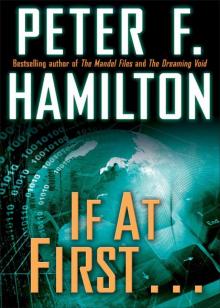 If at First . . . (Short Story)
If at First . . . (Short Story)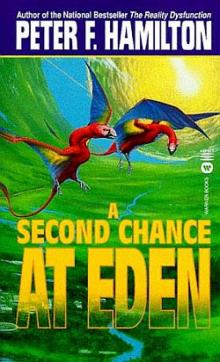 A Second Chance at Eden nd-7
A Second Chance at Eden nd-7 Judas Unchained cs-2
Judas Unchained cs-2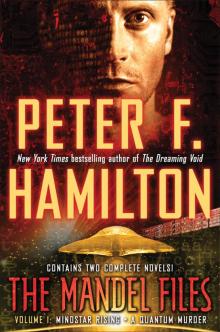 The Mandel Files, Volume 1
The Mandel Files, Volume 1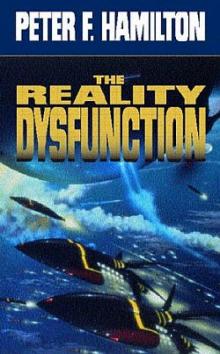 Reality Dysfunction — Emergence nd-1
Reality Dysfunction — Emergence nd-1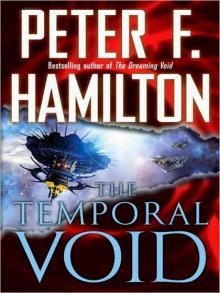 The Temporal Void (ARC)
The Temporal Void (ARC)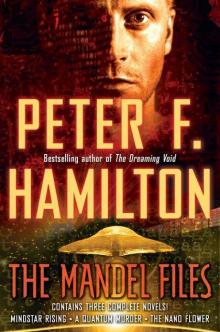 The Mandel Files
The Mandel Files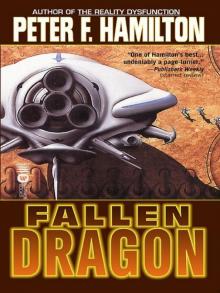 Fallen Fragon
Fallen Fragon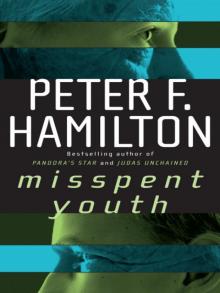 Misspent Youth (commonwealth saga)
Misspent Youth (commonwealth saga)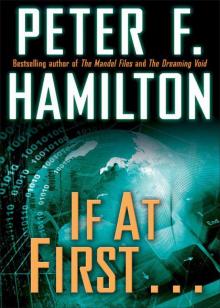 If at First...
If at First... Best of British Science Fiction 2016
Best of British Science Fiction 2016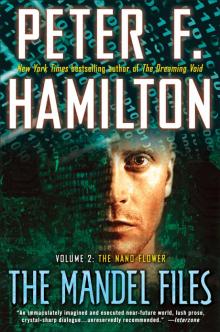 The Mandel Files, Volume 2
The Mandel Files, Volume 2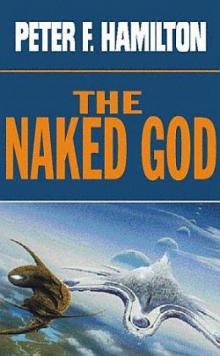 The Naked God - Faith nd-6
The Naked God - Faith nd-6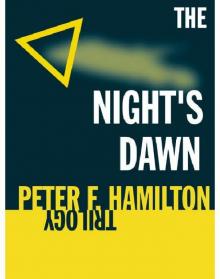 The Night's Dawn Trilogy
The Night's Dawn Trilogy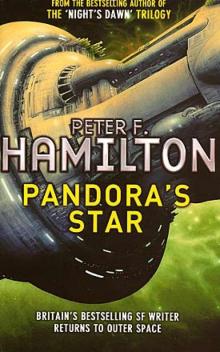 Pandora's Star cs-2
Pandora's Star cs-2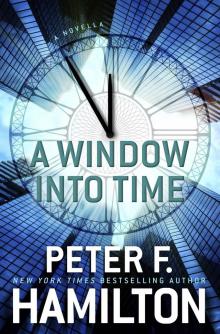 A Window into Time (Novella)
A Window into Time (Novella)